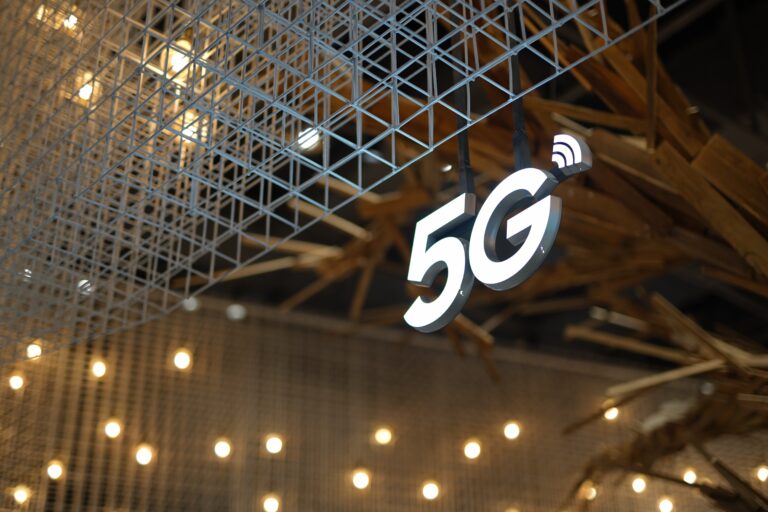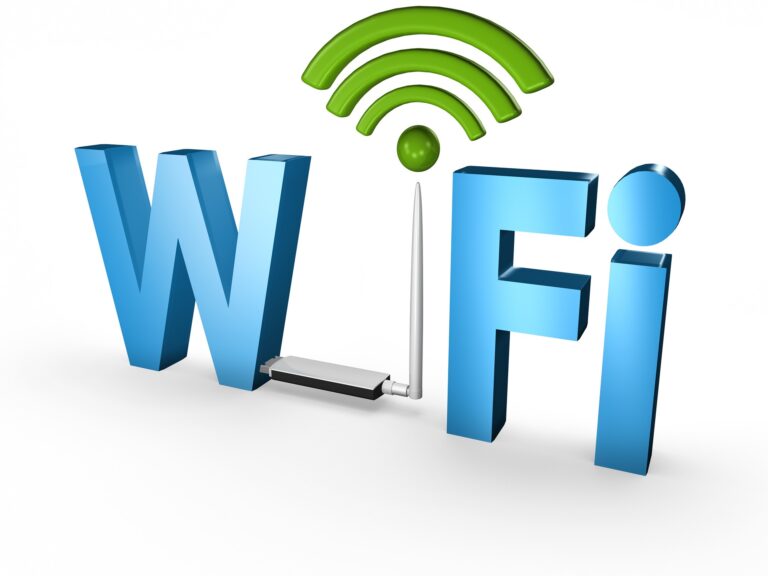Future of Connectivity (5G,WiFi,LoRaWAN,IoT etc.)
Outline
- Introduction
- 5G ( fifth generation of cellular networks)
- Wi-Fi 6 (802.11ax)
- Low-Power Wide Area Network (LPWAN)
- Zigbee and Thread
- No. of connected devices in future?
- Future of connectivity limitations
Introduction
The future of connectivity is likely to involve a combination of different technologies and approaches, such as 5G networks, Wi-Fi 6, and low-power wide-area networks (LPWANs).

5G networks, which are the fifth generation of cellular networks, are expected to provide faster speeds and lower latency than 4G networks, making them well-suited for applications such as virtual and augmented reality, connected vehicles, and the Internet of Things (IoT). 5G networks will also have a much greater capacity than 4G networks, allowing more devices to be connected at the same time.
Wi-Fi 6, which is the latest version of the Wi-Fi standard, is also expected to play a big role in the future of connectivity. It provides faster speeds, lower latency, and better performance in crowded environments than previous versions of Wi-Fi. This will be beneficial for many applications such as streaming video, online gaming, and real-time communication.
LPWANs, such as LoRaWAN and Sigfox, are designed for low-power, long-range communication and are well suited for IoT devices that need to be connected for long periods of time without needing to be recharged. These networks are often used to connect devices such as smart meters, agricultural sensors, and tracking devices.
Other technologies like mesh network and LPWAN network like Zigbee and Thread which have low power consumption and low data rate but they are reliable on routing and very usefull for smart home and Building automation, as they can connect hundreds of devices together within a range of up to 1.5 km and provide low-latency communication for many years using a single set of batteries.
Overall, the future of connectivity is likely to be characterized by a combination of different technologies and approaches, each with its own strengths and weaknesses, that will be used together to provide the best possible connectivity for a wide range of devices and applications.
5G ( fifth generation of cellular networks)

5G is the fifth generation of cellular networks, and it is the successor to 4G networks. It is designed to provide faster speeds, lower latency, and greater capacity than 4G networks, making it well-suited for a wide range of applications, including:
- High-definition video streaming: 5G networks can provide faster speeds and lower latency than 4G networks, allowing for smoother streaming of high-definition video content.
- Virtual and augmented reality: 5G networks can provide the high-speed and low-latency connections needed to support virtual and augmented reality applications.
- IoT and connected devices: 5G networks can support a large number of connected devices, including IoT devices, which need to be connected for long periods of time without needing to be recharged.
- Autonomous vehicles: 5G networks can provide the low-latency, high-reliability connections needed to support the communication between autonomous vehicles and the infrastructure.
- Industry 4.0: 5G networks can enable the communication between machinery and sensor in Industry 4.0, it will enable the use of different automation technologies, such as machine learning and edge computing.
5G networks use different frequency bands than 4G networks, including both high-frequency bands (such as millimeter wave) and low-frequency bands (such as sub-6GHz). This allows 5G networks to provide both high-speed and low-latency connections over short distances, as well as wide-area coverage over long distances.
5G networks are also designed to be more flexible and configurable than 4G networks, with the ability to dynamically adjust the amount of bandwidth and power provided to different devices and applications based on their needs.
It’s worth noting that the deployment and the global adoption of 5G network are different between countries and it’s still in progress, the deployment of 5G network is still ongoing and expected to take several years to be fully deployed, but the majority of the countries are working on it actively. However, 5G technology has been recently introduced in India. The Indian government has taken steps to introduce 5G technology in the country, and the country’s major telecommunications companies have also begun to roll out 5G services.
Wi-Fi 6 (802.11ax)

Wi-Fi 6, also known as 802.11ax, is the latest version of the Wi-Fi standard. It is designed to provide faster speeds, lower latency, and better performance in crowded environments than previous versions of Wi-Fi. Some of the key features of Wi-Fi 6 include:
- Increased bandwidth: Wi-Fi 6 supports a wider channel width, allowing for more data to be transmitted at once, resulting in faster speeds.
- Orthogonal frequency-division multiple access (OFDMA): Wi-Fi 6 uses OFDMA, which allows multiple devices to share the same channel and communicate at the same time. This improves the efficiency of the network and reduces delays, known as latency.
- Multi-user multiple input, multiple output (MU-MIMO): Wi-Fi 6 supports MU-MIMO, which allows multiple devices to communicate with the router at the same time, rather than having to take turns. This improves the capacity of the network and can support more devices.
- Target wake time (TWT): Wi-Fi 6 supports TWT, which allows devices to schedule when they wake up to communicate with the network, reducing their power consumption.
- WPA3 security: Wi-Fi 6 also includes WPA3, which is the latest version of Wi-Fi security. WPA3 provides improved security by using stronger encryption and reducing the number of vulnerabilities in the network
These features make Wi-Fi 6 well-suited for applications such as high-definition video streaming, online gaming, and real-time communication, which are sensitive to delays and require more bandwidth than what is currently available on Wi-Fi 5. Wi-Fi 6 is also well-suited for environments with many devices connected to the same network, such as stadiums, airports, and apartment buildings.
It’s worth noting that in order to take advantage of the features of Wi-Fi 6, both the router and the device connecting to the network must support Wi-Fi 6. Also, to have the full benefit of Wi-Fi 6, the network should be less congested and the area should be less interference.
Low-Power Wide Area Network (LPWAN)
LoRaWAN and Sigfox are both Low-Power Wide Area Network (LPWAN) technologies that are designed for low-power, long-range communication and are well-suited for IoT devices that need to be connected for long periods of time without needing to be recharged.
LoRaWAN is an open standard that uses the unlicensed spectrum in the sub-gigahertz range, typically between 915 MHz and 928 MHz in the United States and 868 MHz in Europe. LoRaWAN devices can communicate over distances of several miles (depending on the environment) while consuming very little power. The standard is based on LoRa (Long Range) modulation, which allows the use of low-cost, low-power devices that can communicate over long distances.
Sigfox is a proprietary LPWAN technology that uses the unlicensed ISM band at 868 MHz in Europe, and 900 MHz in the US, similar to LoRaWAN, but unlike LoRaWAN it doesn’t require gateways or complex network infrastructure, it uses a simplified protocol with a limited data rate (12 bytes per message) and simplex communication (only uplink). Sigfox network is a global low-cost, low-energy, and low-data-rate system that can be used to connect objects to the internet. It’s used mainly for monitoring sensor data, tracking devices and machine-to-machine communication.
Both LoRaWAN and Sigfox are designed for low-power, long-range communication, but LoRaWAN is more flexible and configurable than Sigfox and allows for bidirectional communication and more data to be sent per message. LoRaWAN has a large developer community and is supported by many companies and organizations. Sigfox, on the other hand, has a more proprietary approach and is owned and operated by the Sigfox company, this can be an advantage for those looking for an easier deployment and more streamlined solution.
It’s worth noting that LoRaWAN and Sigfox are not mutually exclusive and can be used together to provide a more complete solution for IoT applications, as both technologies have their own strength and weaknesses, and they can be used in different scenarios and application based on their requirements.
Zigbee and Thread

Mesh networks, such as Zigbee and Thread, are designed for low-power, low-data-rate communication and are well-suited for smart home and building automation applications, as well as for connecting a large number of devices together.
Zigbee is an open standard for wireless communication that is based on the IEEE 802.15.4 standard. It is designed for low-power, low-data-rate communication and can be used for a wide range of applications, including home automation, lighting control, and energy management. Zigbee networks can support up to 65,000 devices, and each device can act as a router, forwarding messages to other devices, which allows for self-healing network and expandability.
Thread, on the other hand, is an IP-based communication protocol that is built on top of the IEEE 802.15.4 standard (similar to Zigbee) and is designed for low-power, low-data-rate communication in the home. It is an open standard and supported by a number of companies, including Google and Nest. Thread networks can support up to 250 devices and it uses a secure, IPv6-based protocol which allows devices to be easily integrated with other IP-based networks.
Both Zigbee and Thread mesh networks are built on the same underlying technology and are designed to work well in low-power, low-data-rate environments. However, Zigbee has been around for longer and has a wider range of devices and a large developer community. Thread, on the other hand, is newer and has a simpler and more secure protocol, it’s also well-suited for devices that need to be integrated with other IP-based networks and the internet.
It’s worth noting that both Zigbee and Thread can coexist in the same network and can be used together to provide a more complete solution for smart home and building automation applications, based on the requirements of the specific devices and applications that are being used.
No. of connected devices in future?
The number of users expected to be connected to the internet in the future of connectivity is likely to continue to grow at a rapid pace. According to data from the International Telecommunications Union (ITU), the number of internet users worldwide has grown from around 400 million in 2000 to over 4.9 billion in 2020. It is projected that by 2025, the number of internet users is expected to reach around 7.9 billion, with more than 5 billion people accessing the internet through mobile devices.
The number of connected devices is also expected to continue to grow in the future of connectivity. According to data from the IoT Analytics, the number of connected devices worldwide is expected to grow from around 14 billion in 2020 to around 30 billion by 2025. This is driven by the increasing number of IoT devices, such as smart homes, connected cars, and wearables, which are becoming more prevalent.
In addition to the growing number of internet users and connected devices, the future of connectivity is also expected to see an increase in the number of users accessing the internet through 5G networks. According to a study by Ericsson, it’s projected that 5G subscriptions will reach 3.5 billion by the end of 2026, and the majority of these will be in the Asia-Pacific and North American regions.
It’s important to note that these are just estimates and projections and the number of users and devices connected to the internet will be affected by various factors such as economic conditions, government policies and regulations, and technological advancements. Also note that the connectivity and the usage may differ between countries and regions, as the demand and the needs will vary based on the society and the culture.
Future of connectivity limitations
As the future of connectivity involves a growing number of devices and applications being connected to the internet, several issues are likely to arise that will need to be addressed. Some of the major issues that may arise include:
- Network congestion: As more and more devices are connected to the internet, the amount of traffic on networks is likely to increase. This could lead to congestion on the networks, resulting in slower speeds and increased latency.
- Security: As more devices and applications are connected to the internet, the risk of cyberattacks increases. This could include attacks on individual devices, as well as attacks on the networks themselves. Ensuring the security of connected devices and networks will be crucial in the future of connectivity.
- Privacy: As more devices and applications are connected to the internet, more data will be collected about individuals. This data could be used for targeted advertising, but it could also be used to track people’s movements and activities. Ensuring the privacy of individuals will be important in the future of connectivity.
- Access: As the demand for connectivity continues to grow, there is a risk that not everyone will have equal access to it. This is particularly true for people in rural and remote areas, who may not have access to the same level of connectivity as those in urban areas.
- Interference: With the introduction of new technologies and increased usage of the spectrum, there is a risk of increased interference between different wireless technologies. This could cause disruptions to communications and negatively impact the reliability and performance of networks.
- Power consumption: IoT and connected devices will require a stable power supply, the future of connectivity should focus on low power technologies to reduce energy consumption and carbon footprint.
To address these issues, it will be important to continue to develop and improve existing technologies, as well as to develop new technologies that are better suited to the demands of the future of connectivity. Additionally, collaboration between industry, government, and research institutions will be important in addressing these issues and ensuring that the future of connectivity is secure, reliable, and accessible to all.

